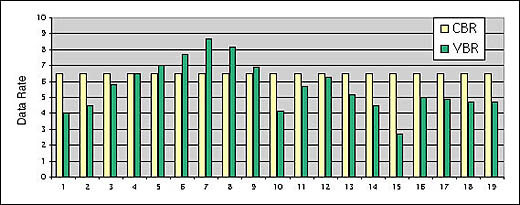So, how do 2 + hour movies fit on to a DVD-5 and look great? Easily with VBR encoding.
VBR stands for Variable Bit Rate. Before we encode your video, our computers will create a "database" of your video content based on the amount of change in the frame or scene. From that "database", the computer will encode your video with a variable data rate allowing a higher bit rate for scenes with pans, zooms, and fast motion, and giving scenes with little or no motion low data rates (ex. Talking head, static shot).

A graphical representation of a scene encoded both CBR and VBR